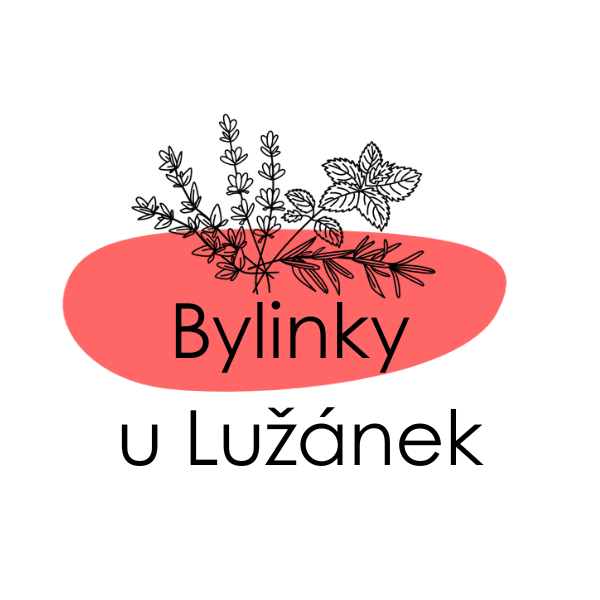Why “DRUHÝ KROK (Second Step)”?
Our Montessori preschool builds on the PRVNÍ KROK (First Step) Montessori nursery with the Meduňková and Rozmarýnová classes. Most children continue with us from there, but we also welcome new children who have experienced Montessori at home or in courses.
Under the umbrella of Second Step, we run the Bylinky u Lužánek class – a place where children grow in a safe and stimulating environment.

Educational Program
In our preschool, children develop independence, responsibility, and a joy for discovery. They learn to focus on tasks, finish what they start, and cooperate with others.
We support them in acquiring practical life skills, language, mathematics, and knowledge of the world around them. We also focus on sensory development, creativity, and natural movement.
Our goal is for every child to leave for primary school as a confident, curious, and balanced individual, eager to keep learning. We awaken in children a love of learning and prepare them for school entry, including preschool readiness.
What children learn with us
Parents as Partners
Parents are key partners in their child’s educational journey. We believe that strong cooperation between preschool and home supports each child’s growth and development.
We involve parents not only as supporters but also as active participants. We communicate regularly, offer individual consultations, and organize joint activities, which strengthen mutual trust and relationships.
Prepared Environment
Our preschool is full of opportunities for children to develop their skills and interests. Each classroom is equipped with quality Montessori materials, prepared for various sensitive periods, supporting independence and creativity with a focus on practical life, sensory development, language, mathematics, and cultural education.
What you will find in our classroom
Outdoor Time – Lužánky Park
Every day we spend time outdoors in the beautiful Lužánky Park. Children enjoy space for free movement, play, and discovering nature. Outdoor time supports their health, love of movement, and natural curiosity.


Our goal is to do everything possible to enable the child to independently and continuously acquire new skills and knowledge. This requires a prepared environment and a guide who supports the child in their development. In short, it is necessary to give the child the space and time they need at that moment and assist only when they desire it.
It is a phase of natural development in which a child is capable of quickly and easily learning specific skills but can also be very sensitive. During this time, children are motivated to certain activities/tools that attract them the most. If this phase is not utilized, the child will learn it later, but with more effort and a longer time.
It is beneficial to emphasize the involvement of the senses (the more, the better) in activities. Working with hands is the foundation for children to comprehend phenomena, develop thinking, and language – from grasping to understanding.
The child independently chooses which tool to work with, when to work with it, and where to work with it. In making these decisions, the child also bears responsibility for their choices, and others respect this.
The organization and equipment of classrooms and cloakrooms are designed to foster children’s independence, creativity, and joy of discovery. They have access to carefully chosen materials and activities that meet their developmental needs and help them build skills in practical life, sensory perception, language, mathematics, and exploring the world around them.
It is the child’s ability to intensely and persistently focus on work. It has three phases – the first is the child seeking something that would capture their interest. The second is concentration – the longest phase, where the child has found what interests them and is working. The final phase is saturation – the child completes the work, cleans up, and feels content. The polarization of attention is achieved through practical life activities (developing fine motor skills, guiding the child to maintain focus and self-control).
Children work in age-mixed groups (age categories, for example: 3–6, 6–9, 9–12 years). These groups encourage collaboration, decision-making, patience, tolerance, mutual assistance, consideration, etc., among children. Simultaneously, they also learn from and inspire each other.
Montessori education is the oldest continuously used educational system. The spiritual mother of this method was the Italian physician Maria Montessori, who began developing her method over 100 years ago. Since then, Montessori education can boast a number of significant and successful individuals, including Jeff Bezos (founder of Amazon.com), Jacqueline Kennedy Onassis (former First Lady of the USA), Gabriel Garcia Marquez (Nobel Prize-winning author), Princes William and Harry (sons of Princess Diana), T. Berry Brazelton (world-renowned pediatrician and author of children’s books), Bill and Hillary Clinton.
Maria Montessori developed an extensive set of educational materials for her method, the simplicity and brilliance of which still amaze many educators and parents. Most of these materials are made of wood or other natural materials and surpass many educational toys of today in their purpose.
When reporters asked the founders of Google – Larry Page, Sergey Brin – what they attributed their amazing abilities to, which led to the founding and successful development of the world’s most used search engine, they expected praise for the prestigious Stanford University, where Larry and Sergey met. To their greater surprise, the answer was that the foundations of their internal motivation and interest in knowledge and positive change were laid in a Montessori preschool, where both entrepreneurs began their educational journey.

Montessori pedagogy is based on utilizing the so-called sensitive periods in a child’s development, allowing the child to easily and naturally acquire specific skills and knowledge for which they have heightened sensitivity during these periods. Children seem to subconsciously know what to focus on and express interest in certain activities or knowledge. If provided with the space and suitable stimuli for development during these periods, children learn very quickly and eagerly. Missing the opportunity to teach children a particular skill during a sensitive period still provides them with a chance to learn it later, but it will require much more effort.
One frequently cited example of a sensitive period is the time when a child is naturally predisposed to language learning. This period begins at birth (some scientists believe it may even start earlier) and ends around the age of six. A child can easily learn their native language and other languages during this time. Learning additional languages at this early age is not only easy for the child but also highly beneficial for their further development. Modern neuroscience findings show that learning another language creates numerous connections in the brain, which overall strengthens the child’s intellectual capacity.
Another sensitive period that would be a shame to miss is the period of learning order. This period also begins at birth and peaks between 18 months and 2.5 years of age, gradually diminishing until the age of 5. During this time, children have a desire for consistency and repetition. Children love routine activities that occur regularly, and deviations from the daily schedule disrupt them. Even the stubborn period of defiance, which emerges around the second year, is justified by exaggerated reactions of a toddler to deviations from the routine that adults often do not even register. During this period, children love order, especially when each item or toy has its designated place. If we organize the child’s environment at this age and let the child put away toys themselves, we won’t have to teach them this for many years to come.
The Montessori method helps children develop their senses and lays the foundation for healthy curiosity and interest in further learning. The child chooses what interests them and learns in-depth about those subjects. It is not uncommon for children in Montessori schools to learn things in mathematics, geometry, geography, and biology that are typically covered in the primary grades. It might also be surprising that the sensitive period for learning to write and read is around the age of four – if children are given the opportunity and suitable stimuli, they eagerly learn what most children with much less enthusiasm learn in school.
The goal of the Montessori method is to teach children respect for themselves, others, and their environment. In a Montessori environment, children learn to develop their individuality in the context of the world we live in. They become self-confident, capable of analyzing facts and responding to them (skills often mentioned by Larry and Sergey), and have the intellectual capacity to translate their thoughts into actions. The method’s founder believed that everything could be solved through peace and that education is essential for peace. Perhaps the two most important lessons that Montessori pedagogy imparts to children are that life is worth living and that the world can be changed.
Maria Montessori developed her method based on long-term observations of children, to which she had great talent. In her works, she states that she is not developing a method but merely describing a phenomenon or force that exists in every child, guiding them towards creativity and influencing their behavior. Her method stimulates this innate force in children and further nurtures it.

Školka Druhý krok se stěhuje na novou adresu, a sice do stejných prostor jako naše montessori jesličky První krok. Od 1.9. budeme mít krásné nové třídy na adrese Štefánikova 836/1 Brno.